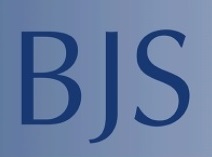Furnee EJ, Broeders JA, Draaisma WA, Schwartz MP, Hazebroek EJ, Smout AJ, van Rijn PJ, Broeders IA
Br J Surg. 2010 Jul; 97(7): 1051-5.
BACKGROUND:
Reflux control may be ineffective in a substantial number of patients after endoluminal EsophyX fundoplication for gastro-oesophageal reflux disease. Subsequent laparoscopic Nissen fundoplication (LNF) might be required to relieve symptoms. The aim of this study was to evaluate the outcome of LNF after previous EsophyX fundoplication.
METHODS:
EsophyX failure was defined as recurrence or persistence of typical symptoms, with or without anatomical failure of the wrap or persisting pathological oesophageal acid exposure. Consecutive patients who underwent LNF after failed EsophyX fundoplication were identified. Symptomatic outcome was obtained by standardized questionnaire, and objective outcome by endoscopy, oesophageal manometry and pH monitoring.
RESULTS:
Eleven patients were included. During LNF, intraoperative gastric perforation occurred in two patients and one developed a subphrenic abscess after operation. Daily heartburn was present in one patient after LNF and three had troublesome daily dysphagia. General quality of life after LNF was not significantly better than that before EsophyX fundoplication. Oesophageal acid exposure was normalized in all patients after surgery. Oesophagitis was absent after LNF in all except one patient who had persisting grade A oesophagitis.
CONCLUSION:
Symptomatic and objective reflux control are satisfactory after LNF for a failed EsophyX procedure. Previous EsophyX fundoplication, however, is associated with a risk of gastric injury during LNF and a relatively high rate of postfundoplication dysphagia.
Link to abstract on PubMed: Furnee EJ, et al; Br J Surg. 2010 Jul; 97(7): 1051-5.


